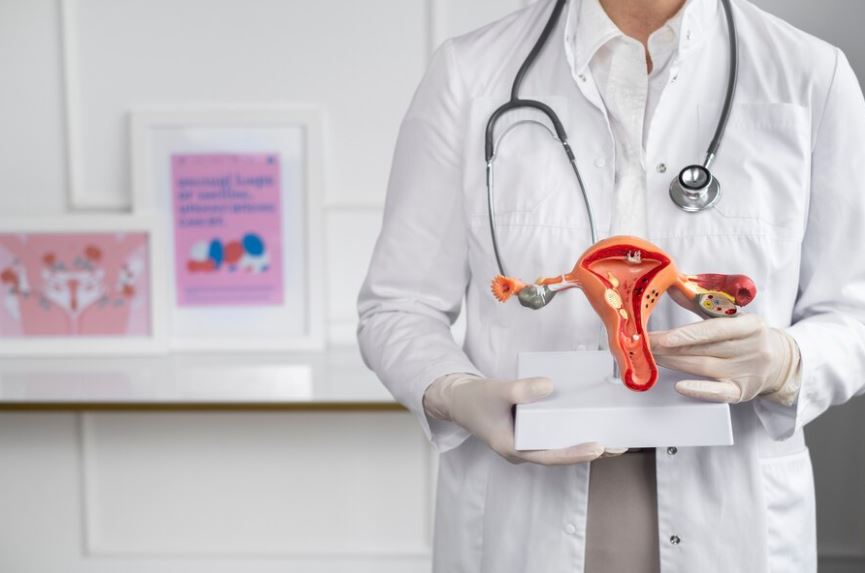Contained Morcellation: A Safer Surgical Choice for Moms

Motherhood is a beautiful yet demanding journey. From pregnancy to postpartum recovery and the daily care of children, a mother’s physical health plays a crucial role in her ability to nurture and support her family. However, many women, both before and after giving birth, experience gynecological issues such as uterine fibroids, endometriosis, or abnormal bleeding. These conditions can significantly affect quality of life and may sometimes require surgical intervention.
As surgical techniques evolve, the emphasis is now on minimally invasive, safe, and effective procedures, especially for women who want to maintain fertility or reduce recovery time. Among these innovations, contained morcellation has emerged as a game-changing technique that enhances surgical safety and outcomes, particularly in laparoscopic myomectomy and hysterectomy procedures.
This blog explores why contained morcellation is one of the safest surgical options for moms, and how medical device manufacturers in India are playing a crucial role in making this technology accessible and reliable.
Why Uterine Health Is Critical for Mothers
The uterus is a central organ in a woman’s reproductive health. It’s not only vital for carrying a child but also affects menstruation, hormonal balance, and pelvic function. When issues like fibroids (non-cancerous growths), adenomyosis, or uterine prolapse occur, they can lead to symptoms such as:
- Heavy or prolonged periods
- Pelvic pain or pressure
- Infertility or difficulty conceiving
- Discomfort during intercourse
- Frequent urination or constipation
For mothers, especially those considering future pregnancies or simply seeking relief from chronic symptoms, surgical treatment must be both safe and minimally disruptive to family life.
Traditional Surgery vs. Laparoscopic Surgery
Historically, open abdominal surgery was the norm for treating uterine conditions. While effective, it came with disadvantages like larger incisions, longer hospital stays, higher pain levels, and extended recovery time. This can be a significant barrier for mothers who must return to caregiving duties quickly.
Thankfully, laparoscopic surgery (or keyhole surgery) revolutionized gynecology by offering:
- Small incisions (usually less than 1 cm)
- Reduced pain and scarring
- Faster recovery
- Lower infection risks
- Shorter hospital stays
However, in certain laparoscopic procedures—especially hysterectomy or myomectomy—the removal of large tissues (like fibroids or the uterus) requires an additional step known as morcellation.
What is Morcellation, and Why Does It Need to Be Contained?
Morcellation refers to the process of breaking down large tissue into smaller fragments so it can be removed through small laparoscopic ports. While this makes the procedure less invasive, uncontained morcellation poses serious risks.
In rare cases, a woman may have undiagnosed cancer within a fibroid or uterine tissue. If morcellation is done without a containment system, there’s a chance that malignant or benign tissue fragments could spread inside the abdominal cavity. This can lead to:
- Cancer cell dissemination
- Development of new fibroid-like growths
- Internal adhesions and complications
- Additional surgeries
To address this, modern surgeons now use contained morcellation, where tissue is first enclosed in a specially designed retrieval bag before being morcellated inside the body. This significantly reduces the chance of spreading harmful or unwanted tissue.
Contained Morcellation: A Safer Choice for Moms
For mothers, every decision regarding their health impacts not just them but also their families. Here’s why contained morcellation is considered a safe and smart option for women, especially moms:
- Preserves Fertility and Reproductive Health
Contained morcellation is often used during laparoscopic myomectomy, a procedure to remove fibroids while keeping the uterus intact. This is ideal for mothers who wish to have more children or want to preserve their reproductive organs.
- Minimizes the Risk of Disease Spread
Contained morcellation prevents tissue fragments from spreading within the abdominal cavity. If any part of the fibroid or uterine tissue is cancerous (even unknowingly), the containment bag acts as a barrier, reducing the risk of dissemination and post-op complications.
- Supports Quick Recovery
Moms often juggle household duties, childcare, and work. The faster recovery time associated with contained laparoscopic procedures means they can return to normal life sooner and with fewer restrictions.
- Lowers Risk of Adhesions and Infections
By keeping morcellated tissue within the containment bag, there’s less risk of internal scarring, infection, or organ damage, common concerns in gynecological surgeries.
- Enhances Surgeon Confidence
Surgeons trained in minimally invasive techniques benefit from using advanced morcellation tools that enhance visibility, safety, and precision, all while reducing the risk of medico-legal complications.
The Role of Medical Device Manufacturers in India
The rise of medical device manufacturers in India has significantly contributed to the accessibility and affordability of contained morcellation technology. These manufacturers are designing, producing, and exporting advanced laparoscopic instruments, morcellators, and tissue retrieval bags that comply with global safety standards.
India’s Contribution Includes:
- High-quality containment systems are designed for ease of use and surgical precision
- Disposable and reusable endobags that cater to various hospital budgets
- Laparoscopic morcellators with cutting-edge control mechanisms
- Training modules and surgical simulators for medical professionals
With regulatory compliance, R&D, and innovation at the forefront, Indian medical device companies are not only supporting hospitals locally but also exporting these life-saving tools to global markets. This ensures that more women, especially in low-resource settings, can benefit from the safety of contained morcellation.
Questions to Ask Before Surgery
If you’re a mother preparing for a uterine surgery, don’t hesitate to ask your doctor the following:
- Will you be using a contained morcellation system for tissue removal?
- What are the risks of uncontained vs. contained morcellation?
- How will this surgery affect my fertility and recovery?
- Are the surgical tools from certified and trusted manufacturers?
Being informed empowers you to make the best decision for your body and your family.



